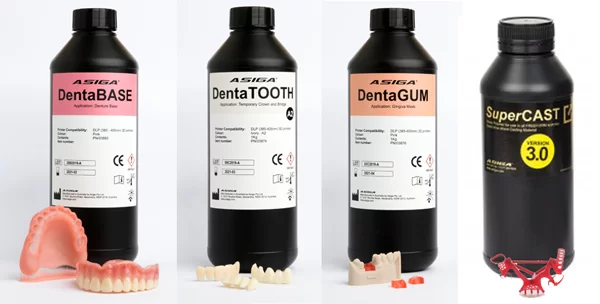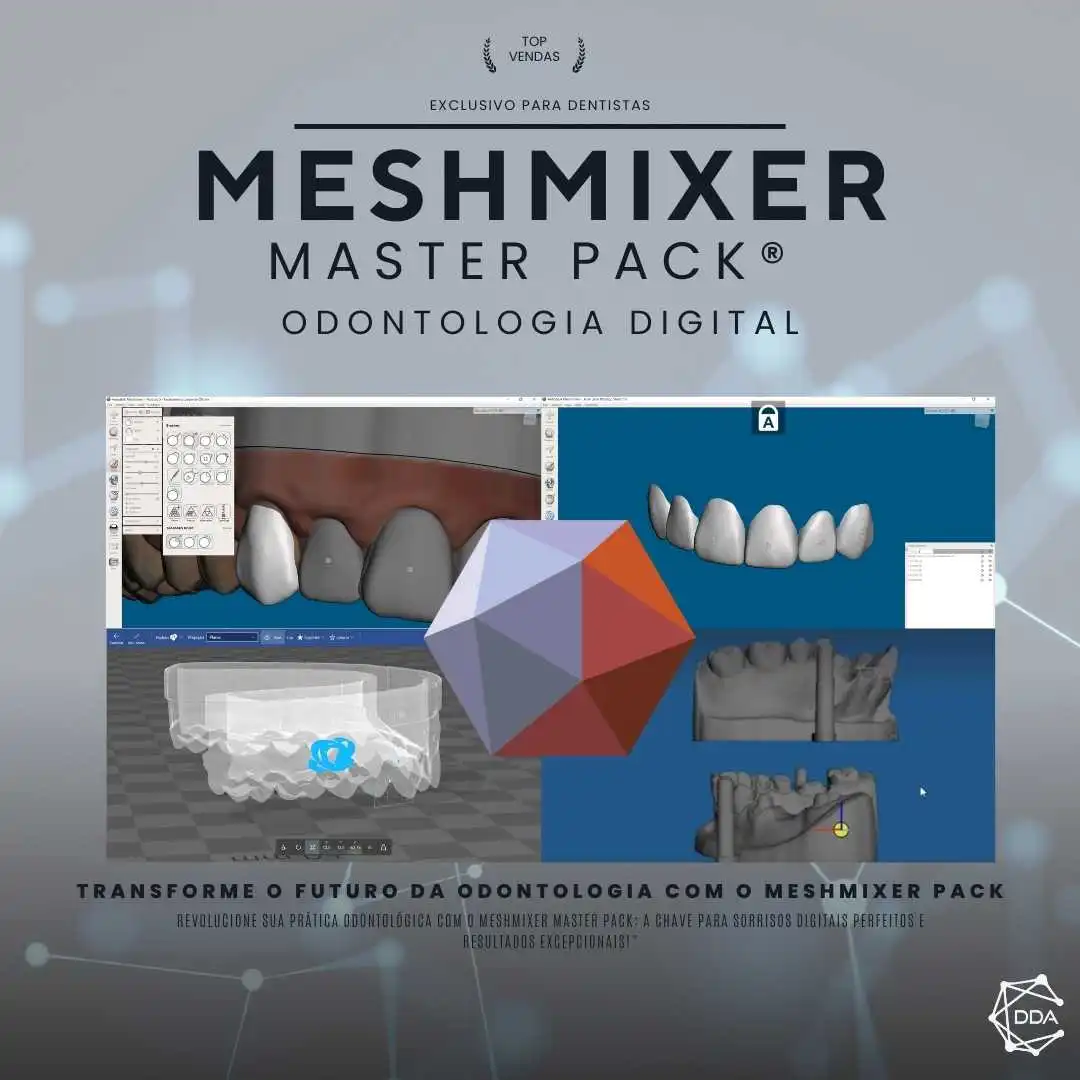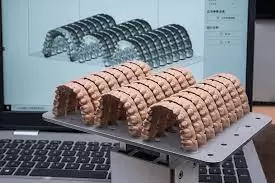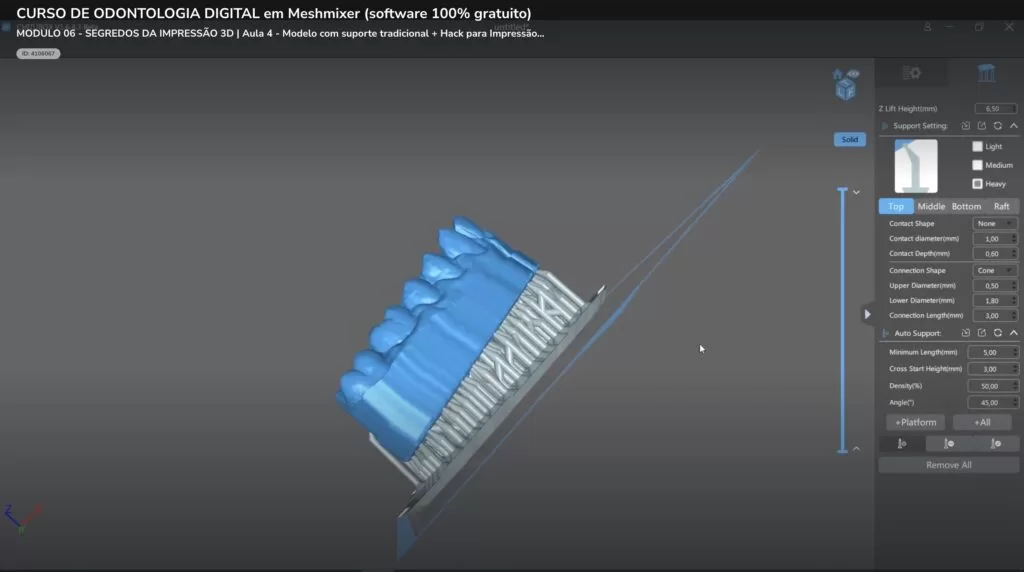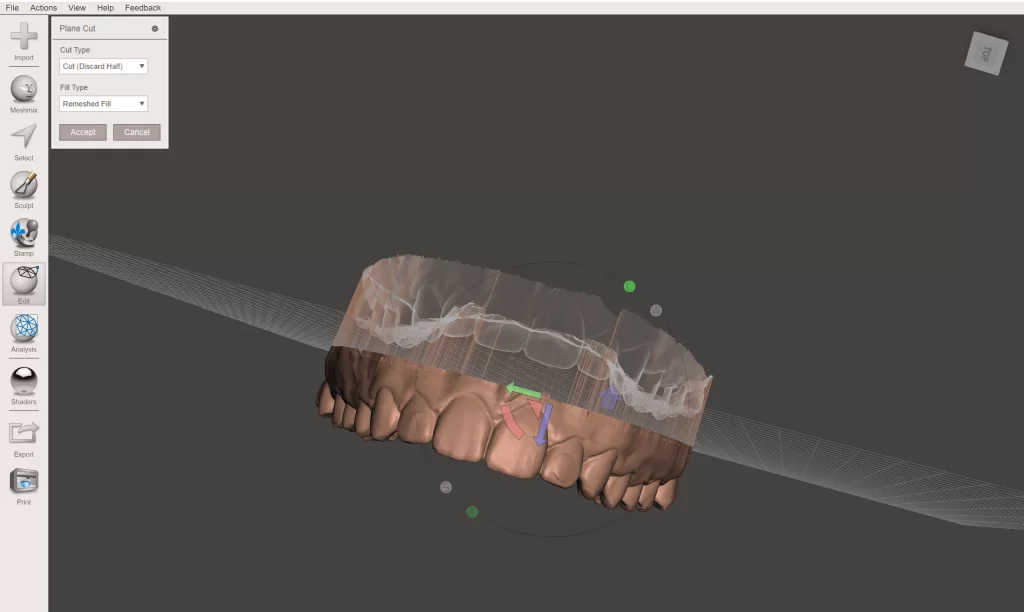What are the best resins for Dental 3D printing
Introduction to dental 3D printing
3D printing is a technology that is revolutionizing the field of dentistry. This innovation allows the creation of models and personalized dental prostheses quickly and accurately, facilitating the professionals' work and improving the patient's experience.
Benefits of 3D printing in dentistry
In addition to saving time and money, 3D printing in dentistry offers other advantages, such as the reduction of errors and the possibility of creating more comfortable and aesthetic prostheses. However, to guarantee the quality of the final product, it is crucial to choose the right resin.


Types of resins for dental 3D printing
There are several types of resins available on the market, each with its advantages and disadvantages. Below, we present the three main categories of resins used in dental 3D printing.
Methacrylate based resins
These resins are quite common and have an excellent cost-benefit ratio. They are derived from polymethyl methacrylate (PMMA), a polymer widely used in dental prostheses.
Advantages of methacrylate
- Low cost
- Easy handling
- Good mechanical resistance
- Dimensional stability
Disadvantages of methacrylate
- Lower accuracy compared to other materials
- May cause irritation in sensitive patients
Resins based on methacrylic acid ester
Methacrylic acid ester is a newer and advanced material compared to methacrylate. It offers better accuracy and biocompatibility.
Advantages of Methacrylic Acid Ester
- higher precision
- Better biocompatibility
- Suitable for sensitive patients
- Less shrinkage during polymerization
Disadvantages of Methacrylic Acid Ester
- higher price
- Requires specific equipment for processing
Acrylate urethane based resins
Urethane acrylate resins are a high-performance option for dental 3D printing. They combine the advantages of methacrylate and methacrylic acid ester, providing excellent quality and durability.
Advantages of urethane acrylate
- High mechanical strength
- Dimensional stability
- Biocompatibility
- Suitable for long term applications
Disadvantages of urethane acrylate
- high price
- More complexity in handling
Factors to consider when choosing a resin
When choosing the ideal resin for dental 3D printing, it is important to consider several factors:
Precision
The resin must allow the creation of models and prostheses with precise and well-defined details.
Dimensional stability
The resin must be able to maintain its shape and size after polymerization, without deformation or dimensional changes.
Biocompatibility
The resin must be biocompatible, that is, not cause allergic reactions or irritation in patients.
Mechanical resistance
The resin needs to have adequate mechanical resistance to withstand the wear and pressure exerted on the prostheses and dental models.
print speed
The resin must allow a reasonable printing time, without compromising the quality of the final product.
Conclusion
Choosing the ideal resin for dental 3D printing depends on the specific needs of each application and the desired characteristics of the final product. Considering the aforementioned factors, methacrylic acid ester and urethane acrylate based resins are more advanced options and suitable for most situations. However, methacrylate resins can be a viable alternative in cases where cost is a determining factor.
FAQ
- Is there any specific resin for making dental crowns and bridges?
Yes, there are specific resins for the manufacture of crowns and bridges, generally developed based on methacrylic acid ester or acrylate urethane, which offer greater precision and mechanical resistance.
- Are dental resins safe for allergic patients?
Most dental resins are biocompatible and safe for allergic patients. However, it is always important to check the manufacturer's information and consult the dentist before use.
- How long does it take to print a denture using 3D printing?
The time required to print a dental prosthesis depends on the type of resin, the equipment used and the size and complexity of the prosthesis. In general, the process can take from a few hours to a day.
- Is any special treatment necessary after 3D printing a dental prosthesis?
After 3D printing a dental prosthesis, it is common for a post-cure process to be carried out, which may include cleaning the part, removing supports and final polymerization in a UV light chamber. This process is important to guarantee the strength and dimensional stability of the prosthesis.
Best-known brands for dental 3D printing
Dental 3D printing is constantly growing, and several brands stand out in the market for offering high quality equipment and resins for this application. In this text, we present some of the best known and most respected brands in the field of dentistry.
1. Formlabs
Formlabs is one of the market leaders in 3D printers and resins for dentistry. The company is known for its SLA (stereolithography) printers, such as the Form 3B, designed specifically for dental use. Formlabs also offers a wide range of biocompatible dental resins, including resins for models, crowns, bridges and braces.
2. 3D Systems
3D Systems is another recognized brand in the dental 3D printing industry. The company has a line of 3D printers designed especially for use in dentistry, such as the NextDent 5100. In addition, 3D Systems offers high quality dental resins under the NextDent brand, which includes materials for crowns, bridges, models and surgical guides.
3. Stratasys
Stratasys is one of the pioneers in the 3D printing market and is strongly active in the dental segment. The company has 3D printers with FDM (fused deposition modeling) and PolyJet technologies, such as the J700 Dental and the Objet30 Dental Prime. Stratasys also offers a variety of dental resins, including biocompatible and high-strength materials.
4. EnvisionTEC
EnvisionTEC is a brand specialized in 3D printers with DLP technology (digital light processing) and high quality dental resins. The company has models such as Vida and Perfactory Vida cDLM, which are suitable for use in dental offices and dental laboratories. EnvisionTEC also offers a wide range of dental resins, including denture materials, models and surgical guides.
5. Asiga
Asiga is an Australian company that stands out in the market for dental 3D printers and high quality resins. The company has models such as Asiga Max and Asiga Pro 4K, which are compatible with a wide range of dental resins. Asiga also offers biocompatible and high-strength resins for dental use.
Conclusion
Choosing the right 3D printer brand and dental resins is essential to ensure the quality and accuracy of the final products. The brands mentioned in this text are some of the best known and most highly regarded in the dental 3D printing market and offer a wide range of options to meet the specific needs of each application.
What are the most recommended types of resin for digital dentistry
Most recommended types of resin for Digital Dentistry
Digital dentistry has experienced a breakthrough with the introduction of 3D printing. Choosing the right resins is essential to guarantee the quality and durability of the final products. Below, we present some of the most recommended types of resin for use in digital dentistry.
1. Resins for dental models
Resins for dental models are used to create accurate replicas of patients' dentition, aiding in diagnosis and treatment planning. These resins must have good accuracy, dimensional stability and mechanical strength. Examples of dental model resins include Formlabs Dental Model Resin and NextDent Model Resin.
2. Resins for temporary crowns and bridges
These resins are designed for making temporary crowns and bridges, which are used as temporary solutions before placing the definitive prostheses. Resins for temporary crowns and bridges must be biocompatible, have good mechanical resistance and adequate aesthetics. Examples of temporary crown and bridge resins include Formlabs Temporary CB Resin and NextDent C&B MFH Resin.
3. Resins for surgical guides
Resins for surgical guides are used to create custom devices that assist professionals during surgical procedures, such as dental implants. These resins must be biocompatible, transparent and have good mechanical resistance. Examples of resins for surgical guides include Formlabs Surgical Guide Resin and NextDent SG Resin.
4. Resins for dental prostheses
Resins for dental prostheses are designed for the fabrication of complete or partial dentures. These resins must be biocompatible, have excellent mechanical strength and dimensional stability, in addition to providing a natural appearance. Examples of denture resins include Formlabs Denture Base Resin and NextDent Denture 3D+ Resin.
5. Resins for orthodontic appliances
Resins for orthodontic appliances are used to make clear aligners and retention devices. These resins must be biocompatible, have excellent transparency and mechanical resistance, in addition to being flexible and comfortable for the patient. Examples of resins for orthodontic appliances include Formlabs Dental LT Clear Resin and NextDent Ortho Clear Resin.
Conclusion
Choosing the right resins is crucial for the success of treatments and dental procedures performed with the help of 3D printing. The resins mentioned in this text are some of the most recommended for use in digital dentistry, ensuring the quality and effectiveness of the final products. Always consult the manufacturer and dental professional to ensure the choice

